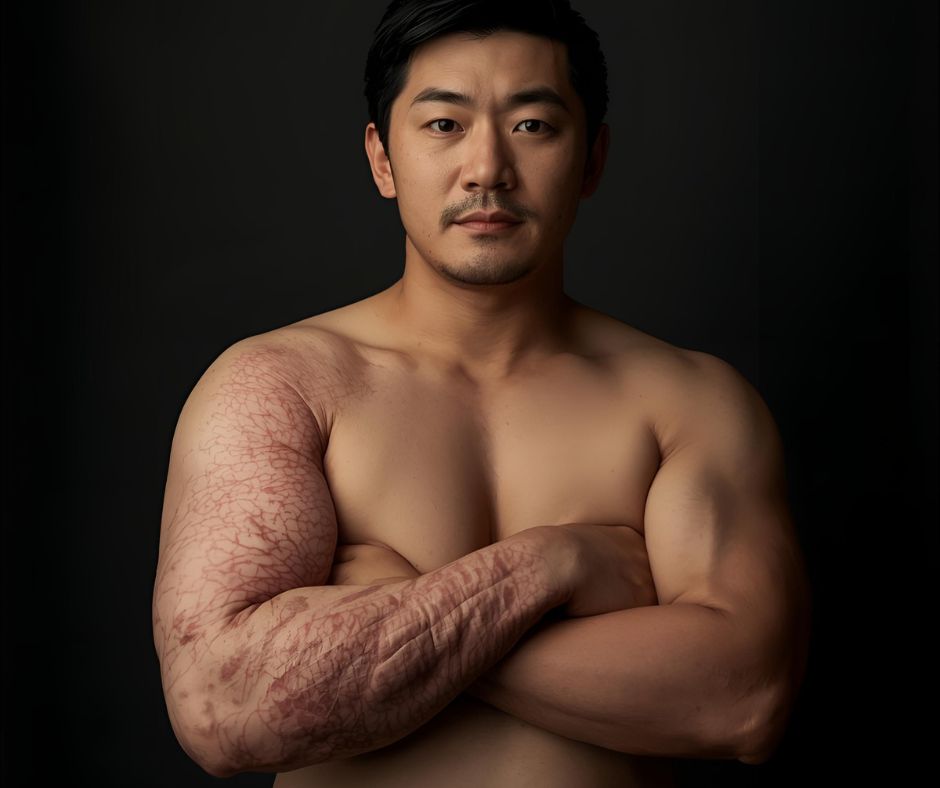Post-orthopaedic Swelling vs. Lymphoedema: key differences
After orthopaedic surgery (or any type of surgery), swelling in the area or nearby tissues is completely normal. The problem comes when swelling persists over time or becomes chronic: Lymphoedema. Understanding the key differences between normal post-op swelling and lymphoedema is crucial for prevention, timely management and treatment. In this blog, we show you how to know the difference and when to seek medical advice. Let´s have a closer look…
What is pos-orthopaedic (post-op) swelling?
Post-op swelling is a natural inflammatory response to surgery. It covers the treated area and near tissues. This swelling is caused by your immune system in order to help the tissue heal properly. How to recognise it:
- Develops immediately or within a few days after surgery.
- Is temporary, generally improving within weeks or a few months (according to the surgery) as tissues heal.
- May feel soft, a little bit tight and can fluctuate in intensity.
- It is located near the scar.
What is post-orthopaedic lymphoedema?
Lymphoedema develops when swelling is caused by blockage or damage in the lymphatic system during surgery (trauma or removal in lymphatic vessels or nodes). As a result, lymph and other fluids can not move and drain out of the area, so swelling turns into a chronic condition that needs immediate treatment to relieve symptoms and avoid progression. How to recognise it:
- Persistent swelling: it lasts more than three months or might develop gradually over time.
- May have a feeling of heaviness, tightness, pain or fullness in the treated area and spreads to the major part or the entire limb.
- Initially, you might feel a tight sensation on the skin, but can harden as the condition progresses.
- Unlike normal swelling, lymphoedema is chronic and can worsen without treatment.
Post-orthopaedic Swelling vs. Lymphoedema: key differences
These are the most common differences between common swelling and lymphoedema (when it is not prevented with MLD)
| Feature | Post-Operative Swelling | Lymphoedema |
| Onset | Days after surgery | Weeks or, in some cases, months after surgery |
| Duration | Temporary, improves within weeks/months | Persistent, lasting months, progresses (mild to severe) if not treated and might become chronic. |
| Location | Around surgical site (tissues near the scar) | As progresses it can affect the entire limb. |
| Skin texture | Generally normal just the scar and near tissue looks elevated | Skin changes (thickening, hardens with time, can develop fibrosis). |
| Symptoms | Mild discomfort/ light swelling, permits mobility | Heaviness, tightness, pain, easy bruising, fullness sensation, joint mobility difficulty. |
| Response to elevation | Improves with limb elevation | Little or no improvement. |
When to seek help
It’s important to consult a healthcare provider (surgeon, GP, certified lymphoedema therapist, swelling treatment specialist) if swelling:
- Persists beyond 3 months after surgery or worsens instead of improving.
- Is accompanied by a sensation of heaviness, tightness, or persistent discomfort in the limb.
- Affects mobility or daily activities.
- Shows skin changes such as thickening, redness, easy bruising or even infections.
- Develops suddenly or is very pronounced without obvious cause, causing pain, discomfort and joint mobility issues.
Prevention through MLD eases swelling and enhances the healing process. Also, early diagnosis allows proper assessment and management by a certified lymphoedema specialist through physical examination, limb measurements, and sometimes imaging (prescribed by a health care provider). Lymphoedema treatment can include compression therapy, Manual Lymphatic Drainage, exercise, diet, skin care, and lifestyle changes.
A final word
While normal post-orthopaedic swelling is part of the healing process and resolves over time, lymphoedema is a chronic condition caused by lymphatic damage that requires ongoing management. Recognising persistent or unusual swelling, especially beyond three months, and consulting a healthcare provider early can avoid condition progression and ensure better outcomes and quality of life.
We hope this information is useful for you. If you need advice or have any questions about our treatments, please contact us. You can find us in Mill Hill Broadway and Islington. We are always happy to help. If you like this blog, please share!
References:
https://www.ncbi.nlm.nih.gov/books/NBK537239/
https://www.lymphapress.com/blog/lymphedema-vs-edema-whats-the-difference/



